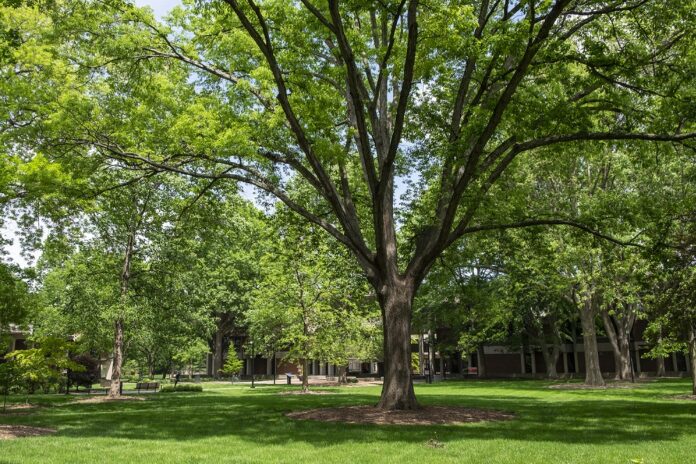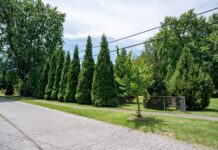
Researchers at the University of Louisville have shown that living near an abundance of green vegetation can offset the negative effects of air pollution on blood vessel health.
The research, led by Aruni Bhatnagar, professor of medicine and director of the UofL Christina Lee Brown Envirome Institute, was published ahead of print in the American Journal of Physiology-Heart and Circulatory Physiology.
Previous studies have shown that proximity to green space — trees and other vegetation — can lower blood pressure levels and the risk of heart disease. A number of environmental factors may come into play, including increased opportunity for outdoor exercise, reduced mental stress and socioeconomic status. However, the relationship between vascular (blood vessel) health, green space and air pollution has not been fully explored.
In this new study, researchers looked at the arterial stiffness of adult volunteers with co-occurring conditions such as obesity, high blood pressure, diabetes and high cholesterol, that put the volunteers in the moderate-to-severe risk category for heart disease.
“Although we have known for a long time that exposure to air pollution has adverse effects on our blood vessels, this study shows that those who live in greener neighborhoods may be less affected,” Bhatnagar said. “Therefore, one way of preventing the harmful health effects of air pollution may be to make neighborhoods more green.”
Using study participants’ residential addresses and data from the U.S. Geological Survey and local Environmental Protection Agency monitoring stations, the research team analyzed environmental factors where the volunteers lived, including:
- Vegetation index, including the amount of and variation in greenness levels within 200-meter and one-kilometer (0.62 miles) radii around each volunteer’s home.
- Particulate matter, tiny toxic particles invisible to the naked eye, in the air.
- Levels of ozone, a colorless, toxic gas and significant air pollutant.
At times when the particulate matter and ozone levels were high, participants had higher levels of arterial stiffness, however, those who lived in areas with more flora had better blood vessel function. Trees and other greenery offset vascular dysfunction that air pollution causes, the researchers explained.
In previous work, the researchers found that individuals who live in areas with a large amount of greenness show lower exposure to volatile chemicals and have greater household income. In the current study, they explored the relationships between greenery, air pollution and arterial stiffness and found a similar correlation between the U.S. Geological Survey’s normalized difference vegetation index and average household income. Even when adjusting for self-reported lifestyle habits such as exercise and smoking — 70% of the volunteers were nonsmokers — the researchers found that “the effects of green spaces on hemodynamic function are largely independent of median household income, physical activity levels and tobacco use.”
“These findings indicate that living in green areas may be conducive for vascular health and that the [favorable] effects of greenness may be attributable, in part, to attenuated exposure to air pollutants such as [particulate matter] and ozone,” said Daniel Riggs, UofL biostatistician and the study’s first author.
This research was conducted in conjunction with the Green Heart Project, a first-of-its-kind study of the effects of plants on human health, led by researchers at the UofL Envirome Institute.





































